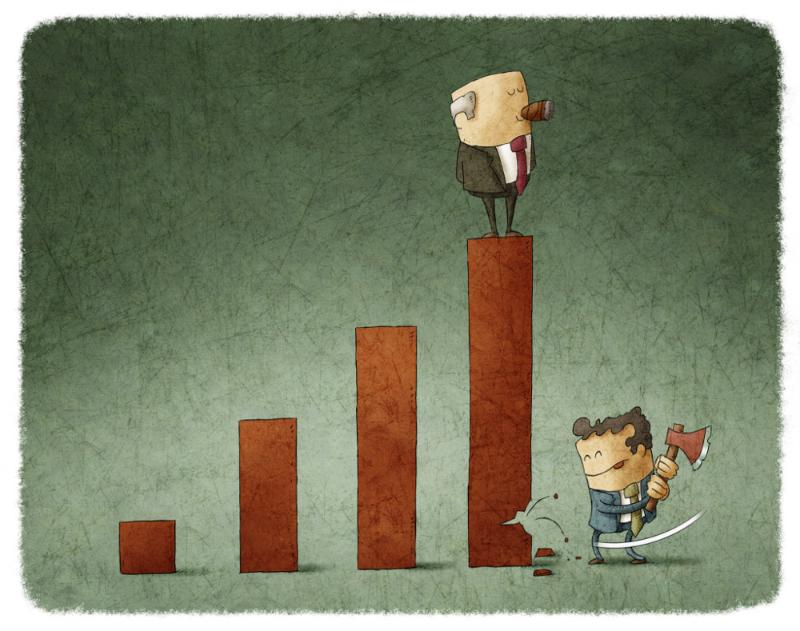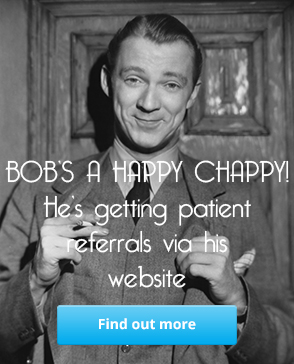Disruptive Forces, Technology & The Future of Audiology
-
By Geoffrey Cooling 8th of May 2015

What Does The Future Bring For Audiology?
As you may know, I attended the Phonak retail seminar recently, one of the talks by Francois Julita fascinated me. It was an exploration of the future possibilities for audiology. A second presentation about the future of fitting software stoked the fire further. I have been thinking about the possibilities ever since.
There is much talk of disruptive innovation in the modern world. With news of new start ups everyday that are going to do something old in a new way or do something completely new. Disruption is an venerable tradition in our world, innovative disruption is pretty much what the human race does.
What perhaps has changed is the speed of disruption, technology has facilitated a rapid evolution in many fields. Our industry has felt some of this disruption and I think will feel much more of it into the future. I think that this disruption may change our business models, may change the provision of hearing aids, may even change the very way we work.
External, Internal & Customer Pressures
The forces that put pressure on our market are both internal and external. Externally new entrants to the market with different business models and ideas about provision put pressure on the model. Internally, people within our ranks who want to change the status quo also put pressure on the existing model.
These forces are driven by a singular pressure, consumer demand. Innovation is driven by consumer demand, the basis of innovation in business is identifying a customer pain and developing a solution that relieves or reduces that pain. Innovation is consumer focused, or else it doesn't work, if the product or innovation isn't wanted, it dies.
The Connected Customer
Lets look at the consumer for a moment, we understand that the consumer has changed, but do we really accept what that means to our market and industry. The rise of the connected customer or Generation C, is inexorable, it is a demographic that refuses to fit into the old model of segmentation that we are used to. The connected customer is not a demographic in the old sense, it is everybody. As many fifty and sixty somethings are connected customers as twenty somethings. It is the nature of the modern world.
They’re connected, and they’re in control. Empowered consumers demand superior service, competitive prices, and quick delivery. They expect you to know them, to understand them, and to deliver what they want, where, when and how they want it. This is a little difficult for people who want to sell to them, their online consumption is fragmented using many devices to consume information.
They are among some of the biggest users of review and opinion sites. They are also some of the biggest researchers while shopping online. This understanding can help anyone who wishes to reach this generation. Content marketing helps to draw this consumer while they are researching, therefore your presence on the SERPs will draw them to you.
Connected customers are changing how many industries do business and speak to their consumers. I think that their demands will change a lot about how we do business as well. In order to support this idea I would like to explore what is happening within aligned industries.
The Wider Healthcare Market
It is estimated that the healthcare consumer in the US will shell out $345 billion dollars this year for health insurance, co-payments and deductiblesand a further $271 billion on health related items like gym memberships, weight loss programs, exercise equipment etc. That is a market of $626 billion dollars and it is expected to continue to rise for the foreseeable future. The healthcare consumer though is a radically different animal than it once was, they demand value, price and quality transparency from healthcare providers.
Healthcare onsumer's have made it clear that they want retail medicine, mHealth and telemedicine. Already, disruptive innovators have risen to meet that need. I became aware of two apps called Heal and Skinstamatic through an article I read by Michael Krivich about the smartphone in medicine.
Heal is only currently available in the Los Angeles and San Francisco market, using the app on the smartphone you are matched with a local Doctor who comes to your house in under one hour and the cost is a flat fee of $99 with no additional charges or extras. It is convenient and accessible with a price point well within most consumers reach.
Skinstamatic is a medical image search app. In essence, you can take a couple of pictures of your skin problem and upload them. Dermatologists and dermatology professionals using photo identification will review them and make recommendations as to the top potential diagnoses. You can then use the app to access a local dermatologist and make an appointment for treatment.
Whilst I find what these apps do really cool, it is what they tell us about modern consumers that it is important. The apps and indeed the smartphone are meeting the healthcare needs of the consumer but only as a convenient touch point to the professional. They deliver convenient, accessible, mobile care and allow the healthcare consumer or patient a measure of value, price certainty, quality, control and information. The development of these apps and services have been driven by consumer demand.
Future Models For Audiology
What does that mean for us in our industry? Our business model is as threatened by consumer demand as any other industry, the ramifications and pain caused could be amplified because we really haven't felt it before. There is a certain arrogance in place within our industry, or perhaps it is better termed a resistance to change. The position is enforced by the idea that the Patient needs us in the equation.
Somebody is always willing to deliver to consumer demands, if there is enough of a demand, they will find a way to deliver.
The truth is that our input is needed but technology is overtaking us, we need to change or we risk becoming insignificant. We need to be cognitive of that fact, intimately aware, we also need to identify what the consumer wants and we need to plan to deliver it. Because if we don't undertake that process, somebody else will and then eat your lunch.
The Future Of Fitting? Maybe Fine Tuning
Tele audiology is quite prevelant within our industry already, it is used at present just in specific situations. At present it involves equipment in one place, being remotely controlled by a professional in another place. It is a costly affair, equipment for a full service needs to be purchased and put in place. After that though, it is just broadband costs and somebody at the testing site to turn things on.
That situation will change as the technology evolves, it will become cheaper and easier to offer audiology services remotely. Fitting a remote Patient at the minute is again a current possibility, it involves a bit of lateral thinking and the presence of a hearing aid programming interface at the site. However, having talked to people at some of the manufacturers, remote fine tuning is something that they are developing. For many of the public providers such as the NHS or the VA, remote fine tuning solutions make perfect financial and operational sense.
For the customers of those institutions, remote fine tuning also makes perfect sense. Ease of use, accessibility and convenience are high, no travelling, no parking worries. Will every customer want it? perhaps not, but I would imagine that a large per centage of the cohort would find it attractive to use sometimes during their Patient journey. If public Patients see value, do you think private Patients would also see value? I am being facetious, of course they will, and just like public Patients not all will want it. However, I think many would.
An App For That
How it will be deployed is the interesting question, are we looking at an app to deliver the interface and the communication? Is it a web interface that is desktop based? Is it something that is centrally integrated within the fitting software? Is it just something that facilitates the communication from the fitting software to the hearing aids?
I think a web based solution for desktop would probably be a better option for both Patient and provider. The solution needs to be able to facilitate the communication between the fitting software and the aids and also between the professional and the Patient. Before it is possible from a financial point of view, manufacturers will have to look at the communication interface protocol. Sending out an icube or a Widex Link with every hearing aid purchase will get costly. Although communication by Bluetooth as a programming interface would be a suitable and easy solution.
Self Fine Tuning
There is an increasing demand for self fine tuning options, we need to deliver this option to the consumers that demand it. Phone based fine tuning in one form or other has been available for many years. It began with offerings from Starkey and has evolved to the interface for the Linx from Resound. Consumers want it, manufacturers will have to deliver it, again, it will need to be done carefully and we will need to ensure that we are all involved with the process.
Changed Provision Model
Could we move towards online sales? Anything is possible, as the technology evolves a changed delivery model becomes possible. The main question is whether there is a demand for that type of provision. I think there is, I think products like the Soundhawk, PSAPs and the success of Blamey & Saunders in Australia prove that. Blamey & Saunders are respected Audiologists in Australia who supply hearing aids through an online e-commerce model and do quite well. There is a demand, the question for us is how we are going to meet that demand.
The Business Model Impact
The remote fine tuning concept alone would change the economics of provision, mainly by reducing aftercare delivery costs. This has two possible impacts, more profit or reduced sales price. The online provision model would have massive ramifications for the economics of provision. I see those models as complementary models, the traditional model will always be attractive to a certain cohort of Patients.
However, like everything else once they become mainstream they will be seen as the normal manner of provision. As technology and possible delivery methods evolve and become more mainstream, our business will continually change. Again, this change will be driven by consumer demand. I will leave you with this thought;
We need to accept consumer wants and needs and we need to be the ones facilitating that demand to survive.
Thanks to Francois Julita and Michael Boretzki for stoking my imagination.

